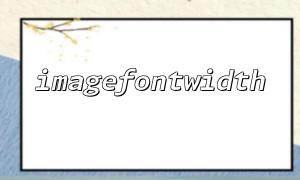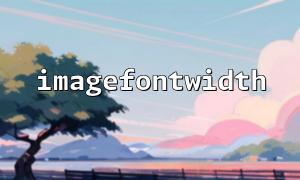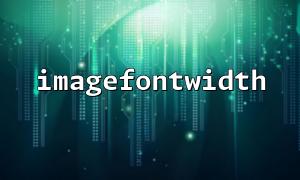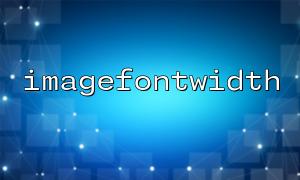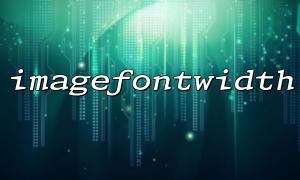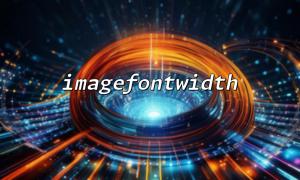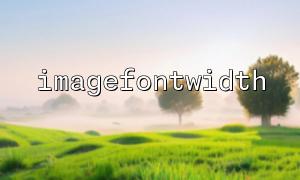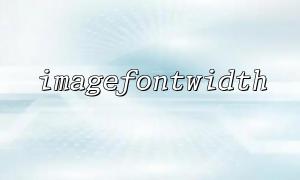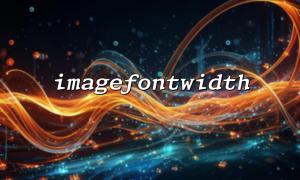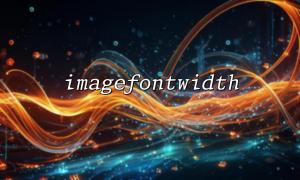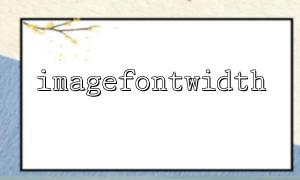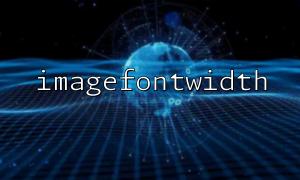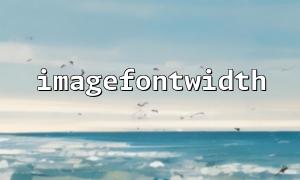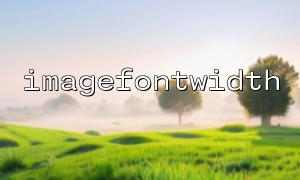In the PHP image processing library GD, imagefontwidth() is a very useful function that helps developers determine the character width of a particular font at a specified size. This is especially important when developing a text puzzle tool, as it enables precise text layout and composition. This article will walk you through how to use the imagefontwidth() function to create a simple text puzzle tool through an example.
The imagefontwidth() function returns the width of a character in the font corresponding to the specified font number. Its basic syntax is as follows:
int imagefontwidth ( int $font )
The parameter $font is the font number (ranging from 1 to 5), and the return value is the width of each character in that font (in pixels).
For example:
$width = imagefontwidth(5);
echo "The character width of font 5 is: $width pixels";
We will develop a text puzzle tool with the following features:
The user enters a string of text;
Automatic layout based on the specified number of rows or columns;
Generate a text puzzle image;
Automatically calculate the position of each character.
During this process, imagefontwidth() will be used to determine the width of each character to ensure precise layout.
First, create the canvas and set the background color and font style:
$text = "HELLOPHP";
$font = 5; // Use built-in font number 5
$charWidth = imagefontwidth($font);
$charHeight = imagefontheight($font);
$cols = 4;
$rows = ceil(strlen($text) / $cols);
<p>$imgWidth = $cols * $charWidth;<br>
$imgHeight = $rows * $charHeight;</p>
<p>$image = imagecreate($imgWidth, $imgHeight);<br>
$bgColor = imagecolorallocate($image, 255, 255, 255);<br>
$textColor = imagecolorallocate($image, 0, 0, 0);<br>
Use imagestring() to draw each character onto the canvas, arranging them by row and column:
for ($i = 0; $i < strlen($text); $i++) {
$row = floor($i / $cols);
$col = $i % $cols;
$x = $col * $charWidth;
$y = $row * $charHeight;
imagestring($image, $font, $x, $y, $text[$i], $textColor);
}
Generate the image and output it to the browser or save it as a file:
header('Content-Type: image/png');
imagepng($image);
imagedestroy($image);
This script can be saved as text_puzzle.php, and the result can be viewed by accessing http://m66.net/text_puzzle.php.
The generated image will automatically adjust to the number of rows and columns based on the input text, arranging each character neatly. This method is ideal for educational graphic applications, word puzzle games, and simple text-image synthesis tools.
Potential optimization directions include:
Support for custom fonts (using imagettftext() and TTF fonts);
Adding features like text color selection and spacing control;
Support for background images or transparent backgrounds;
Allowing dynamic puzzle generation by passing text via GET parameters, such as http://m66.net/text_puzzle.php?text=PHPISFUN&cols=3
By combining imagefontwidth() and imagefontheight(), we can quickly achieve precise text layout in images. Developing a simple text puzzle tool not only helps you master basic GD library image operations but also deepens your understanding of PHP's powerful graphics capabilities.
In practical projects, this method can be expanded to dynamic CAPTCHA generation, text-image card rendering, text visualization, and other applications. With PHP's simple syntax and rich built-in functions, we can easily create various interesting and practical image processing tools.
